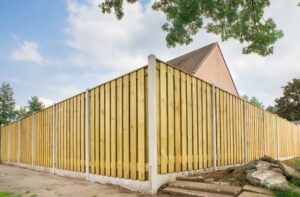The Climate of Lee’s Summit, Missouri
Lee’s Summit is a city located in Jackson and Cass counties in the U.S. state of Missouri. With a population of over 100,000 residents, it is one of the largest suburbs of Kansas City. Lee’s Summit has a humid continental climate, characterized by warm, humid summers and cold winters.
The city’s climate is influenced by its inland location far from any major bodies of water as well as its position on the northern edges of the humid subtropical climate zone. Let’s take a closer look at the climate data and patterns that shape Lee’s Summit’s seasonal weather.
Spring Climate
Spring in Lee’s Summit brings increasing temperatures and the end of winter’s cold and snow.
Temperatures
- Average high temperatures rise from the mid-50s Fahrenheit in March to the mid-70s Fahrenheit by May.
- Average low temperatures increase from the mid-30s in March to the mid-50s by May.
- The last freeze of winter usually occurs in early April.
Precipitation
- Spring is Lee’s Summit’s rainiest season, with average monthly precipitation totals ranging from 3.5 to 5 inches.
- Frequent thunderstorms develop during spring as warm, moist air from the Gulf of Mexico clashes with drier air masses. Some storms can be severe, producing heavy rain, hail, lightning, and tornadoes.
- Snowfall becomes infrequent by April, with only 1 inch of snow on average for the month.
Severe Weather
- Lee’s Summit is located in a region of the country with a high risk for severe thunderstorms during spring.
- Thunderstorms bring threats of tornadoes, hail up to 2 inches in diameter, damaging winds over 60 mph, heavy rainfall leading to flash flooding, and frequent lightning.
- On average, 18 tornadoes occur within 40 miles of Lee’s Summit in April and May each year. Two of the most devastating tornado events in the city’s history occurred during spring – an F4 tornado on April 10, 1979 that caused 6 deaths, and an EF3 tornado on May 28, 2019 that injured 8 people.
- A tornado siren system provides critical warning to residents when dangerous weather approaches. Taking shelter quickly in interior rooms or basements during severe storms can save lives.
Summer Climate
Summers in Lee’s Summit bring hot, humid weather ideal for outdoor activities.
Temperatures
- Average highs reach the upper 80s Fahrenheit in June and peak in the low 90s during July and August.
- Average low temperatures rise to the upper 60s by July.
- The city sees over 30 days per year with highs above 90°F.
- With high humidity levels, heat index values frequently reach 100-110°F, increasing the threat of heat-related illness.
Precipitation
- Summer is the city’s second rainiest season, with average monthly precipitation totals ranging from 4 to 5 inches.
- Pop-up showers and thunderstorms develop frequently on hot, humid summer afternoons. Though usually brief, these storms can produce very heavy downpours and dangerous cloud-to-ground lightning.
- The peak months for severe weather are May and June. However, storms with hail, high winds, heavy rain, and tornadoes can still occur through August.
Activities
- Lee’s Summit offers many ways to beat the summer heat. Community pools provide swimming and water slides. Parks with lakes, splash pads, and shaded trails offer outdoor recreation. And indoor facilities like movie theaters, arcades, bowling alleys, and museums give climate-controlled spaces to enjoy.
- Annual summer events include Longview Lake Beach Blast in June with swimming, sand, and games on an inland beach, the Star Spangled Spectacular fireworks display on July 4th, and the Downtown Days street festival in August with live music, craft vendors, and a classic car show.
Autumn Climate
Pleasant temperatures and colorful foliage make autumn a beautiful season in Lee’s Summit.
Temperatures
- Average highs decrease from the mid-80s Fahrenheit in September to the mid-50s by November.
- Average lows fall from near 60°F in September into the mid-30s by November.
- Overnight freezes usually begin by late October, requiring warm coats and protection for cold-sensitive plants.
Precipitation
- Autumn is Lee’s Summit’s driest season, with average monthly precipitation totals between 3 and 4 inches.
- The remnants of tropical systems can occasionally bring heavy rain – in September 2017, the city received over 9 inches of rain in just 3 days due to Tropical Storm Lidia.
- Severe weather is less common but still possible, especially in September when heat and humidity have not yet dissipated.
Foliage
- Fall foliage develops gradually across the season, with peak vibrancy in mid-to-late October.
- Lee’s Summit has a diversity of deciduous trees leading to beautiful color. Red maples, sugar maples, sweetgum, oak, hickory, and ash trees paint the city in brilliant shades of red, orange, yellow, and purple.
- Longview Lake Park and towpath trail offer great locations to spot fall color while hiking, biking, or boating.
Winter Climate
Cold temperatures and moderate snowfall characterize Lee’s Summit winters.
Temperatures
- Average high temperatures from December through February range from the mid-30s to low 40s Fahrenheit.
- Average lows fall to the low 20s Fahrenheit in January.
- Low temperatures below 0°F occur on one or two nights per winter.
- Wind chills regularly drop into the single digits and even below 0°F after arctic cold fronts move through.
Precipitation
- Winter is the driest season in Lee’s Summit with average monthly precipitation totals between 1.5 and 3 inches.
- Snow averages 10-15 inches per winter and occurs from November through March. The city sees a trace or more of snow on 5-8 days annually.
- Major snowstorms of 6 inches or more happen about once every 5 years in Lee’s Summit, such as the 20 inch snowfall over 2 days in February 2011.
- Wintry mixes of freezing rain, sleet, and ice are less common than snow but lead to dangerous travel when they occur.
Activities
- Sledding, ice skating, snowshoeing, and cross-country skiing are popular outdoor winter activities when snow cover allows.
- The Summit Waves indoor aquatic center provides year-round water fun. And indoor recreation centers have basketball courts, indoor tracks, and exercise rooms for staying active.
- Community events like the Mayor’s Christmas Tree Lighting, holiday home tours, Breakfast with Santa, and Lee’s Summit WinterFest bring seasonal celebrations.
Climate Hazards and Preparedness
Lee’s Summit’s continental climate brings risks from extreme heat, severe storms, flooding, and winter weather. Residents should take preparedness steps for the hazards most likely during different seasons.
Heat Waves
Prolonged periods of high heat and humidity can overcome the human body’s ability to regulate temperature, leading to heat cramps, exhaustion, stroke, and death. Those especially vulnerable include older adults, young children, those with chronic medical conditions, and outdoor workers. Precautions when heat index values exceed 100°F include:
- Staying well hydrated
- Limiting time outdoors in the afternoon
- Taking frequent breaks in shade or air conditioning
- Checking on elderly neighbors and relatives
- Avoiding strenuous outdoor work
- Never leaving kids or pets in vehicles
Thunderstorms and Tornadoes
Spring and summer storms can quickly turn severe, producing hail, damaging winds, heavy rainfall and deadly lightning. Tornadoes can destroy homes and businesses in their path. Precautions include:
- Monitoring forecasts and warnings from the National Weather Service
- Taking shelter in interior rooms or basements when storms threaten
- Having a weather radio and emergency kit ready
- Securing loose outdoor furniture and debris that could blow around
- Avoiding windows and automobile travel when storms hit
Flooding
Excessive rainfall can exceed local waterways’ capacity, causing overflow and flooding. Low-lying areas near creeks and rivers have highest risk. Precautions include:
- Avoiding driving or walking through flood waters
- Keeping basements clear of valuables that could be damaged
- Ensuring sump pumps are working properly
- Having sandbags ready to divert water
- Purchasing flood insurance for protection
Winter Weather
Ice storms can make roads dangerously slick and lead to widespread power outages from downed trees and lines. Heavy snow can paralyze travel and collapse roofs. Bitter cold threatens those without shelter. Precautions include:
- Stocking food, water, and medicine to avoid driving during icy conditions
- Checking and fueling generators in case of prolonged power loss
- Insulating pipes and allowing faucets to drip during extreme cold
- Layering clothing and limiting exposed skin when outdoors
- Bringing pets indoors when wind chills are below zero
Climate Outlook
Lee’s Summit’s climate patterns are shifting along with the rest of the planet due to global climate change influences. Ongoing trends according to regional climate studies include:
- Average temperatures have risen nearly 2°F since 1970 and are projected to rise another 5-6°F by 2100 if high emissions continue. This will exaggerate heat waves, expand the mosquito season, lengthen the growing season, and diminish winter cold.
- Although year-to-year precipitation variability is high, more intense heavy rain events are expected. This will increase flooding risk.
- Earlier spring warmth and rainfall is causing earlier blooms and pollen, which may worsen allergies.
- Winter and spring extremes are trending towards conditions more favorable for severe storms and tornadoes.
Adapting infrastructure, emergency preparedness, and public health for these climate shifts will enable Lee’s Summit to remain a thriving, resilient community for decades to come.
Conclusion
Lee’s Summit’s mid-continental location brings a diverse variety of weather across the seasons. Though each season poses hazards ranging from heat waves to blizzards, residents who understand the city’s climate patterns and take proper precautions can enjoy everything the area has to offer year-round. Monitoring forecasts, having emergency plans, and looking out for neighbors are keys to thriving through whatever the seasons bring.
Hours
Monday: 9:00 AM – 5:00 PM
Tuesday: 9:00 AM – 5:00 PM
Wednesday: 9:00 AM – 5:00 PM
Thursday: 9:00 AM – 5:00 PM
Friday: 9:00 AM – 5:00 PM
Saturday: 9:00 AM – 5:00 PM
Sunday: 9:00 AM – 5:00 PM
Service Areas
Downtown Lees Summit (64063)
New Longview (64081)
Lakewood (64064)
Raintree Lake (64082)
Legacy Wood (64086)
Highland Meadows (64063)
Eagle Creek (64086)
Pryor Meadows (64082)
Winterset Park (64081)
Woodland Shores (64082)
Summit View Farms (64086)
Belmont Farms (64086)
Windsor Station (64081)
Eagle Creek Estates (64086)
Bridgehampton (64064)
Chapel Ridge (64063)
Bent Tree Bluff (64081)
Park Ridge (64081)
Strother Ridge (64082)
Deerbrook (64086)
Kansas City
Blue Spring
Grain Valley
Contact Us.
Get Solutions For All Fencing Services
Every day from
9:00 — 5:00
Call to ask any question





